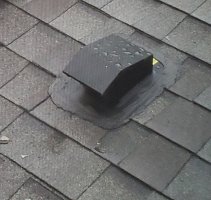Qwerty1234
REGISTERED
As part of building a new deck/porch extension to my house, my builder is moving the existing vent of a gas dryer. It previously vented to the side of the house and will now vent through the roof of an outdoor porch.
The vent pipe extends about 3 ft horizontally through the new porch roof (unheated area) and then exits above the roof.
I'm not 100% sure about what he did.
Does this type of work have to be done by a licensed plumber?
Does it have to be inspected by the town inspector (which department)?
Will this cause issues with snow in the winter?
I live on Massachusetts.
Thanks!
The vent pipe extends about 3 ft horizontally through the new porch roof (unheated area) and then exits above the roof.
I'm not 100% sure about what he did.
Does this type of work have to be done by a licensed plumber?
Does it have to be inspected by the town inspector (which department)?
Will this cause issues with snow in the winter?
I live on Massachusetts.
Thanks!

